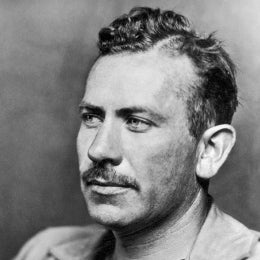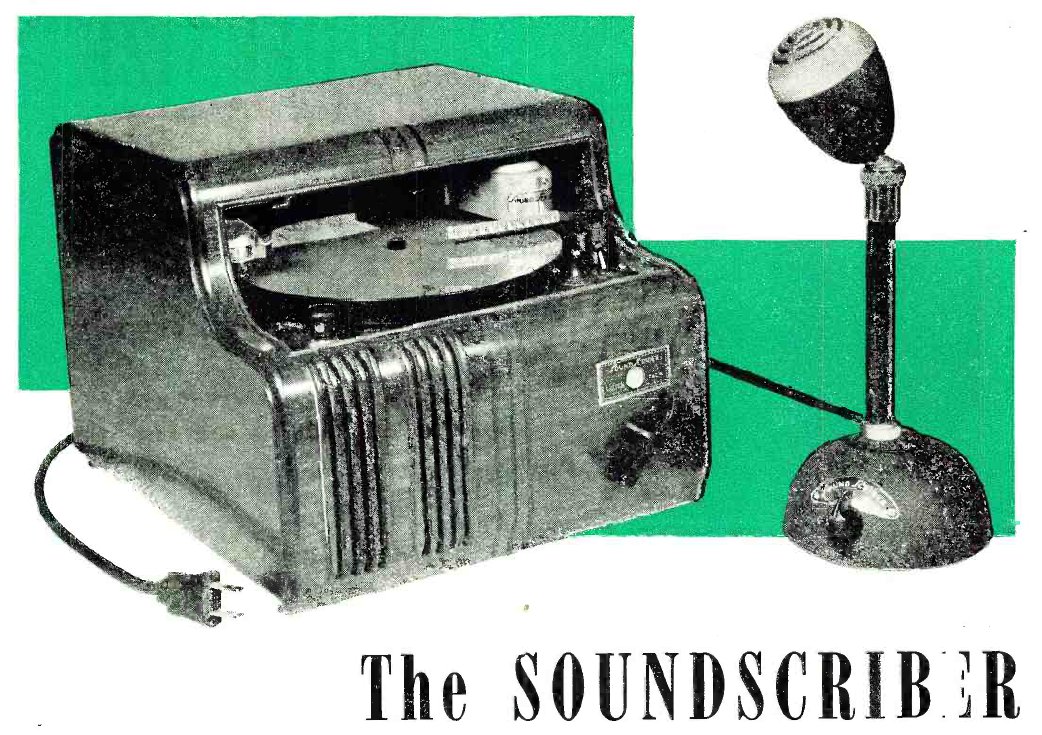
The UC Santa Barbara Library’s recorded sound collections are vast and diverse: they include over 400,000 recordings representing voices throughout history, from intimate home recordings from the 1890s, to rare commercial recordings on wax cylinders and 78 rpm discs, to unique radio broadcasts. Thanks to a generous donation by alumni Mark Maxson ‘75 and Mary Burchill ‘76, the collection now includes a unique set of recordings made by California author and Nobel Prize laureate John Steinbeck (1902–1962).
The recordings date from the 1940s-50s and were dictated by Steinbeck onto SoundScriber discs for typists to later transcribe. Introduced in 1945, the SoundScriber dictation machine used a soft plastic recording disc to record and play back sound on the same machine, making transcription easier. The small size of the discs and their durability also made it convenient to send them in the mail, with each 7-inch disc carrying about 15 minutes of content per side.
The content on the discs span a range of Steinbeck material, including author dictations of his 1947 novel The Wayward Bus, which was set in a fictional town in Central California; A Russian Journal (1948), a travelog of the Soviet Union accompanied by Robert Capa photography; and “Zapata,” the narrative upon which Steinbeck based his classic script for the 1952 film Viva Zapata! directed by Elia Kazan and starring Marlon Brando. The discs provide a unique insight into Steinbeck’s writing process during this creative period and while also capturing the author’s essence through his recorded voice.
 Mark, a dedicated collector of Steinbeck materials including rare first edition books, saw that the recordings were recently up for auction. Fascinated by the recordings and their unique historical significance, he purchased them to add to his growing collection. “While I generally knew what content was on the recordings, I didn’t have a way to play the SoundScriber discs safely,” says Mark. “When I heard that the Library’s [Henri Temianka] Audio Preservation Laboratory was equipped with a playback method that could transcribe the recordings, I jumped at the chance to hear Steinbeck’s voice for the first time on these discs.”
Mark, a dedicated collector of Steinbeck materials including rare first edition books, saw that the recordings were recently up for auction. Fascinated by the recordings and their unique historical significance, he purchased them to add to his growing collection. “While I generally knew what content was on the recordings, I didn’t have a way to play the SoundScriber discs safely,” says Mark. “When I heard that the Library’s [Henri Temianka] Audio Preservation Laboratory was equipped with a playback method that could transcribe the recordings, I jumped at the chance to hear Steinbeck’s voice for the first time on these discs.”
Mark was referred to the Library’s Special Research Collections by his friend and fellow UCSB alumnus Alec Webster ‘76, who knew that the Library specialized in recorded sound collections and had a purpose-built audio preservation and digitization facility, the Henri Temianka Audio Preservation Laboratory. Maxson then contacted Performing Arts Curator David Seubert, who is an expert in digitizing historic recordings, to see if they could tour the facility and listen to the discs with a goal to safely digitize the content. Huddled together in the lab, Maxson and Webster listened in astonishment as they heard Steinbeck’s deep, rolling voice.
“There’s something extraordinary about audio that brings us into an exact moment in history,” remarks Mark. “As a Steinbeck collector, I felt that his personality was so much more evident in the recordings than other collectible items like personal notes or book notations.”
Impressed by the Library’s professionalism and technology in recorded sound, Mark decided to donate the discs to the Performing Arts Collection for their long-term safekeeping and stewardship. Mark and Mary also supported the collection’s processing through a cash donation so that other Steinbeck collectors and scholars could access their content. In donating the materials and supporting their digitization, Mark recognized that the discs’ value would be expanded as part of the Library’s collections, which are open to the general public for research and enjoyment.
“The Performing Arts Collection was largely built on serendipitous moments like these that connect us to dedicated collectors like Mark,” remarks David Seubert. “I’m thrilled to include Steinbeck’s recordings as part of collection offerings and am excited about their research and scholarship potential.”
Image Captions
- Portrait of John Steinbeck in Photoplay (November 1939), McFadden Publications, page 22 (public domain).
- Soundscriber advertisement in Stanley Kempner, "The Soundscriber," Radio News (Vol. 32, No. 3, September 1944), Ziff-Davis Publishing, page 43 (public domain).


